|
|
Chondrules |
| Listing of Structures |
| Back...Next |
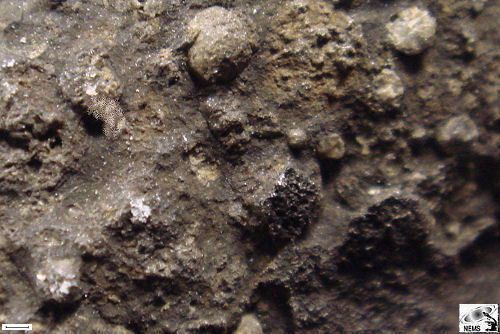 ..
..
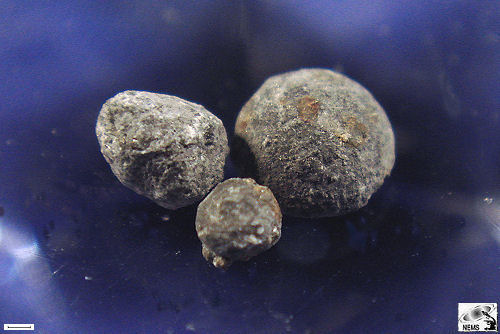
| Figure 1. Scale bar 400 µm. | Figure 2. Scale bar 250 µm. | |
| Exposed chondrules in matrix, Allende, CV3. | Three complete chondrules extracted from Saratov, L4. | |
| The term "chondrules"
first appeared in scientific literature in 1864, coined by German mineralogist
Gustav Rose in his work, Description and Classification of the Meteorites in
the Collection at the Mineralogical Museum at Berlin, published by the Royal
Academy of Sciences. These small, spherical objects, ranging from
sub-millimeter to millimeter sizes, are essential constituents of chondritic
meteorites. The Formation of Chondrules The proto-sun's formation was a vast, natural process that unfolded over approximately 50 million years. It began with the gravitational collapse of a segment of a massive molecular cloud, giving rise to a protostar. Over tens of millions of years, rising temperatures and pressures within this protostar triggered nuclear fusion, marking the birth of the Sun. Chondrules likely emerged after the proto-sun took shape, forming within the disk of gas and dust-known as the solar nebula-surrounding the young Sun, prior to the development of planets. These structures are thought to be among the earliest solid materials in our Solar System. Composition of Chondrules Chondrules are predominantly made up of silicate minerals, such as olivine and pyroxene, often encased in feldspathic materials that may appear glassy or crystalline. Alongside these primary components, chondrules contain trace amounts of other minerals, including iron sulfide (troilite), metallic iron-nickel alloys, oxides like chromite, and phosphates such as merrillite. These tiny molten droplets solidified within the solar nebula and later combined with other materials, contributing to the formation of the parent bodies of chondritic meteorites. Significance in Solar System History Relevant to our Sun, chondrules represent "first-generation" mineralogy, originating from gases expelled during the explosive deaths of earlier stars. As primary structures, they offer a glimpse into the initial stages of solid material formation in the early Solar System. |
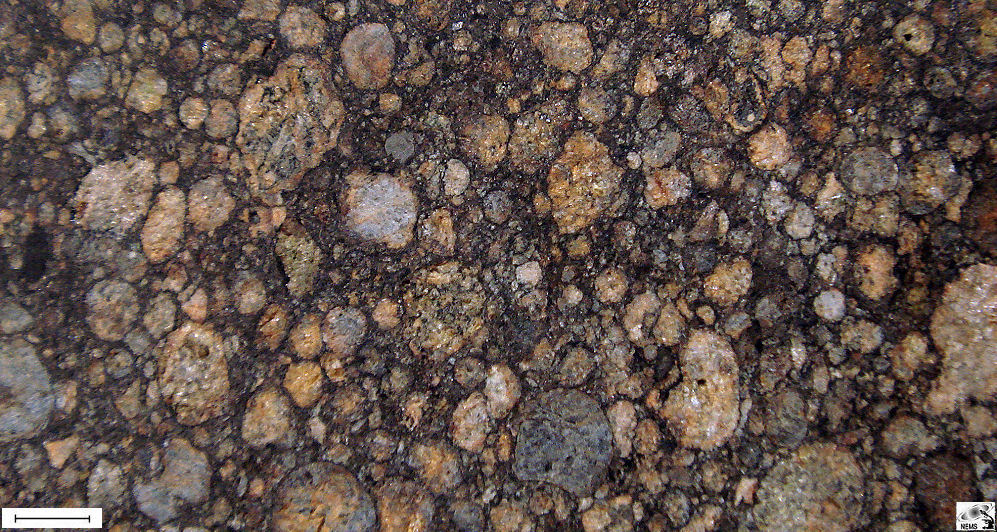 |
| Figure 3. Scale bar 1.4 mm. |
| Chondrules in matrix. Axtel, CV3 . |
| Chondrules in thin section. |
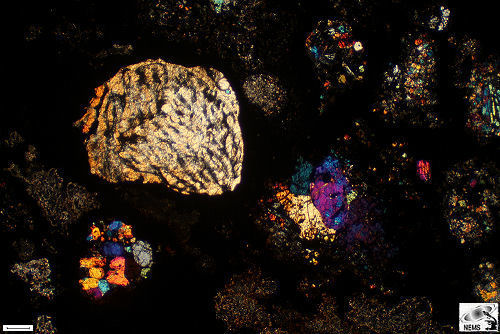 ..
..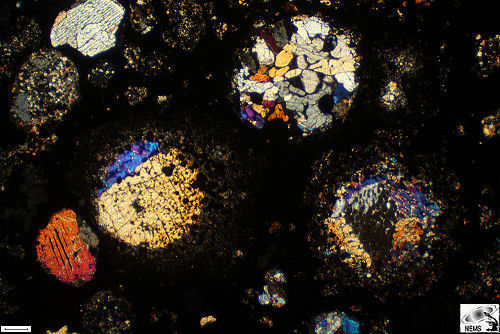
| Figure 4. Scale bar 300 µm. | Figure 5. Scale bar 300 µm. | |
| Barred/radial chondrule. | Complex chondrules - upper right, center. Barred chondrule upper and lower left. | |
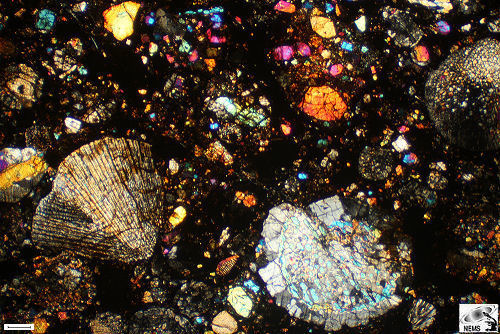 ..
..
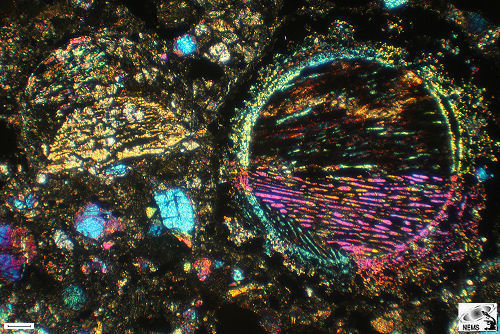
| Figure 6. Scale bar 300 µm. | Figure 7. Scale bar 200 µm. | |
| Radial chondrule, fragment - left. | Radial chondrule, partial - right. | |
| Listing of Structures |